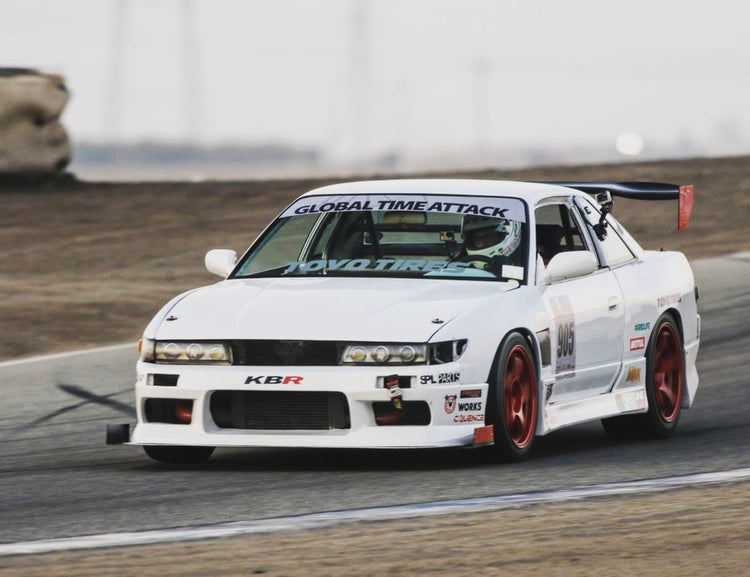Off Road & Overland Suspension: The Basics
Before beginning our journey down the rabbit hole of off road suspension; I would like to preface that this is a general roundup of the two most popular suspension styles and their components. There are thousands of different styles, brands, techniques, and designs in off road suspension systems and our trained staff at 9 Aftermarket Motorsports knows the in and out of each! However, This guide will cover the most commonly used in aftermarket passenger truck and SUV vehicles.
Tailoring your vehicle to suit off-road and trail conditions is much more in depth than simply installing a set of mud terrain tires, hopping on the Rubicon trail, and hoping for the best (although if you are attempting this with a Prius please send us videos)! Without a properly installed off road suspension system you and your vehicle can incur both injury and damage. Thus, we highly suggest you reach out to 9 Aftermarket Motorsports representatives to ensure you get the correct parts, professionally installed, and tailored to your preferred adventure terrain.
Fortunately for consumers: automotive manufacturers now offer some fantastic vehicles with some incredible out of the box options. Notably there are some dominating brands and models that come to mind (Trail-Rated Jeep Vehicles, TRD Tacoma trucks and SUVs, Nissan Frontier, Ford Raptor / Bronco / Ranger, Etc.). These vehicles (trim package depending) offer a “lifted” suspension from the factory that allows the adaptation of a larger tire size, in conjunction allowing the vehicle to clear more obstacles. However, there are limitations to the factory components and that's where the aftermarket industry steps in!
Generally modern trucks and SUVs offer two types of suspension systems from the factory. The most common would be the independent front suspension in conjunction with a live axle (or solid axle) rear suspension. Independent front suspension is designed to have a more road friendly comfort and ride quality. These vehicles include Toyota trucks and SUVs, Ford Trucks and SUVs, as well as the vast majority of others. The independent suspension allows articulation (up and down) from each of its independent side to side components, meaning each side (left wheel / right wheel) can operate without affecting the other. Independent front suspension uses coil over strut style components in conjunction with upper and lower control arms that affix to the chassis of the vehicle. Common upgrades include a ride height adjustable coilover conversion and geometry correcting control arms. Aftermarket coilover suspensions allow for more “travel” of the suspension cycle (the wheel going up and down), and in turn allow for a higher performance while off road.
The next segment of off road suspension is called a live axle or solid axle. This suspension system is one of the oldest and can be found on the majority of older full size trucks, SUVs, and most notably the Jeep vehicles. A solid axle suspension is essentially a straight tube that connects the left and right wheels of the vehicle together as one and uses a separate shock and spring to control ride height, comfort, and travel. Generally this suspension system has less road comfort when compared to the independent front suspension (it's big and heavy in comparison). What the solid axle lacks in road comfort it makes up for in its off road capabilities. This suspension system is what is used in the majority of hard rock crawling situations and is known to be extremely durable. The solid axle suspension allows for more articulation when properly designed. Common aftermarket upgrades include a taller spring and extended shocks which allow for a larger tire and increased ground clearance.
Now that we have covered the market’s majority of suspension systems for passenger trucks and SUVs, let's take a look and review some key words and definitions of the components:
Spring / Coil : Controls ride height and wheel travel.
Control Arms: Used to correct and maintain suspension geometry
Travel / articulation : the amount the wheel and tire can go up and down.
Ground clearance: the distance between the ground and the bottom of your vehicle.
Strut / Shock: The component used to maintain ride quality and dampening.
Although this is an incredibly slimmed down version of off road suspension, a topic that in itself could be a novel, rest assured your 9 Aftermarket Motorsports representative will help guide you through every step of the journey to modifying your vehicle for any adventure. Our trained staff is the best in the business and only a phone call, email, chat, or (hopefully) short drive away!
See you on the trail!
- 9 Aftermarket Motorsports


